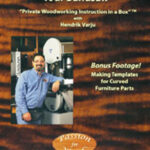USING AND TUNING YOUR BANDSAW DVD
$110.00
Private Woodworking Instruction in a Box
with Hendrik Varju
Produced by Passion for Wood, Ontario, Canada
ISBN 978-0-9781432-8-2
As reviewed in The Australian Woodworker Issue 160
Several of Hendrik Varju’s DVDs have been previously reviewed in The Australian Woodworker, but it is still probably necessary to begin with a few words about this talented woodworking teacher and the way in which he approaches each of his presentations.
Hendrik Varju is a Canadian whose business – A Passion for Wood – is located in Erin, an hour’s drive out of Toronto.
In the past few years, in addition to his work as a designer, maker and restorer of fine furniture, and as an extension to the classes he conducts in his workshop, Hendrik has been producing educational videos that are trademarked: ‘Private Woodworking Instruction in a Box’.
It is this idea that the viewer should share as closely as possible the experience of a student in his workshop, that is one of the distinguishing features of Varju’s DVDs.
On this set of four Disks, he initiates the theme with a lightly theatrical introduction to the surrounding countryside, turning in at the gate and the crunch of footsteps on the gravel paths. Inside the workshop, Hendrik is waiting with a cup of coffee and a friendly greeting.
The presentation begins in a style that is quiet, professional, relaxed and sincere.
It’s impossible to imagine Hendrik Varju using an auto-prompt, and he only very occasionally appears to be checking his off-screen notes. He speaks without hesitation, making sure that the main points are covered, but also interspersing them with remarks often drawn from his own long experience in woodworking.
As an example, while talking about the need to relax the tension on a bandsaw, he mentions the use of quick release levers and how these often have only a maximum and a minimum setting.
In the minimum setting, the sawblade loses contact with the wheel since it is in that position that the sawblade can be removed. This means, says Varju, that the blade may shift on the wheel/s before it is fully re-tensioned. Even a very small movement will upset the tuning of the saw and should therefore be avoided.
He describes how, when working in another workshop, he clamped a block of wood to the frame of the bandsaw in order to stop the lever at the point where the tension was approximately half of its working value. This overcame the problem, but still allowed the blade to be replaced at any time simply by removing the block of wood.
These embellishments of the central core material and the ease with which Varju integrates them into his presentations, go a long way towards engendering a feeling of one-on-one personal instruction.
In common with every disk in all of Hendrik Varju’s videos, the first of this set starts with a brief statement about safety. Once that has been dealt with, he turns the viewer’s attention to the first two topics: Cast Iron Bandsaws and European Bandsaws.
Two machines are used for the demonstrations – an American made 14″ Delta and an Italian made 16″ Laguna.
The cast iron frame Delta has a 6″ riser kit fitted to it and both have other modifications. On the Delta bandsaw, for instance, extensions to the back and front rails allow the fence to be used on the right hand side of the blade. Varju contends that this is both more convenient and safer for use by a right-handed operator. He remarks that it means the woodworker approaches both the tablesaw and bandsaw in a similar manner.
The differences in manufacture between the Laguna and the significantly less expensive Delta, allows an exploration of some of the upgrades that can be undertaken to improve a bandsaw’s performance. These include changing the tensioning springs and using zero clearance table inserts.
The discussion on Bandsaw Blades that follows is the first of several on various aspects of this topic in the 4-disk presentation. It concerns folding and unfolding blades with particular reference to not losing bits of skin in the process.
Varju even demonstrates an outdoor method of unfolding bandsaw blades; the coil is untied and thrown onto a grassed area (to ensure it is not damaged) making certain that there is not the slightest chance of being grazed by its sharp teeth.
Elsewhere in the presentation, Varju describes the various types of blade available and their characteristics, the changing of blades, adjusting their tension and tracking, the setting up of blade guides and also such related topics as how to check that a blade is running true to the table and how to determine the amount of blade drift (by a very simple test) and compensate for it. The discussion of each topic is aided by a demonstration on one or both the Delta and Laguna machines.
Woven into this material is a comprehensive coverage of the setting up of a machine when it first arrives in your workshop and a detailed description of how to fine-tune a bandsaw to achieve the best performance.
After dealing with the mechanics of the bandsaw and its components in the first two Disks, Varju spends the remaining two Disks on actually working with the machine.
The chapter titles indicate the scope of this content: Ripping Rough Stock, Fine Ripping and Crosscutting, Resawing, Free-hand Curve Cutting, Cutting Circles and Joinery Work.
The basics of how to rip both rough and milled stock and crosscutting using a mitre gauge leads on to a full chapter on successfully and accurately resawing thick material.
The discussion on cutting curves presents some interesting innovations that produce accurate results with a high level of safety.
The last section on performing joinery on a bandsaw includes the use of templates to make curved components for furniture.
In the Bonus Footage, Varju gives his views on the role that a bandsaw should play in a workshop, citing its special abilities, but acknowledging that it is not really a ‘finishing tool’ and that its need for careful set-up may be seen as fussy.
While the wealth of material contained in Using and Tuning Your Bandsaw is sure to make it invaluable to the novice or less experienced woodworker, it’s likely that even those who have significant experience with the bandsaw will find here new and innovative ways to set-up, maintain and use their machine.
Duration: 7hrs, 54 mins, 4 discs
DVD – English – NTSC
Related Products
-
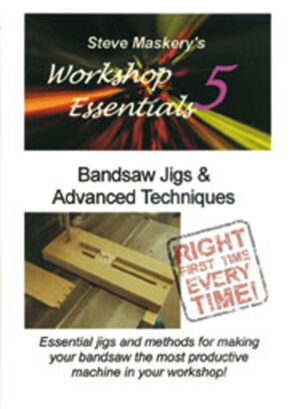
WORKSHOP ESSENTIALS 5 DVD – BANDSAW JIGS & ADVANCED TECHNIQUES
-
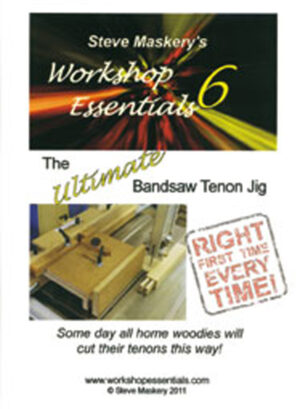
WORKSHOP ESSENTIALS 6 DVD – THE ULTIMATE BANDSAW TENON JIG
-
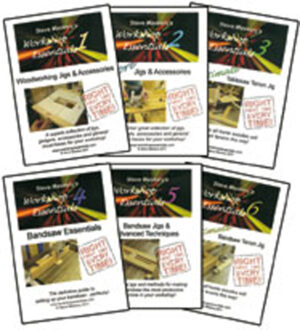
WOKSHOP ESSENTIALS COMPLETE SET – 1 TO 6 DVD SET
-
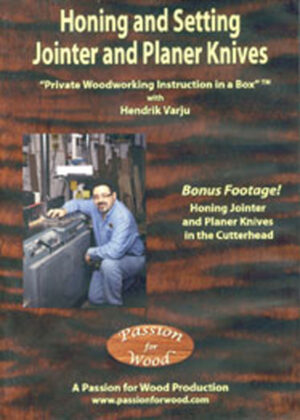
HONING AND SETTING JOINTER AND PLANER KNIVES DVD
-
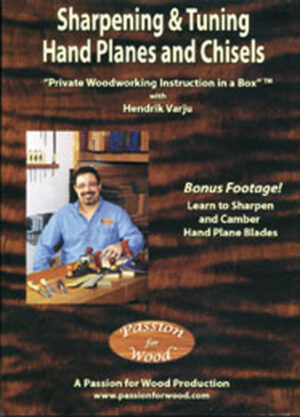
SHARPENING & TUNING HAND PLANES AND CHISELS DVD
-
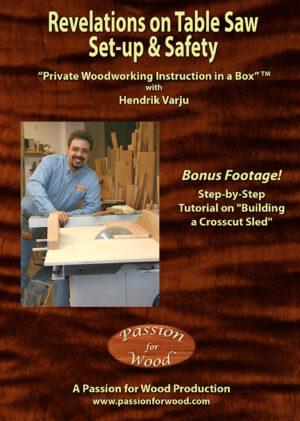
REVELATIONS ON TABLE SAW SET-UP & SAFETY DVD

